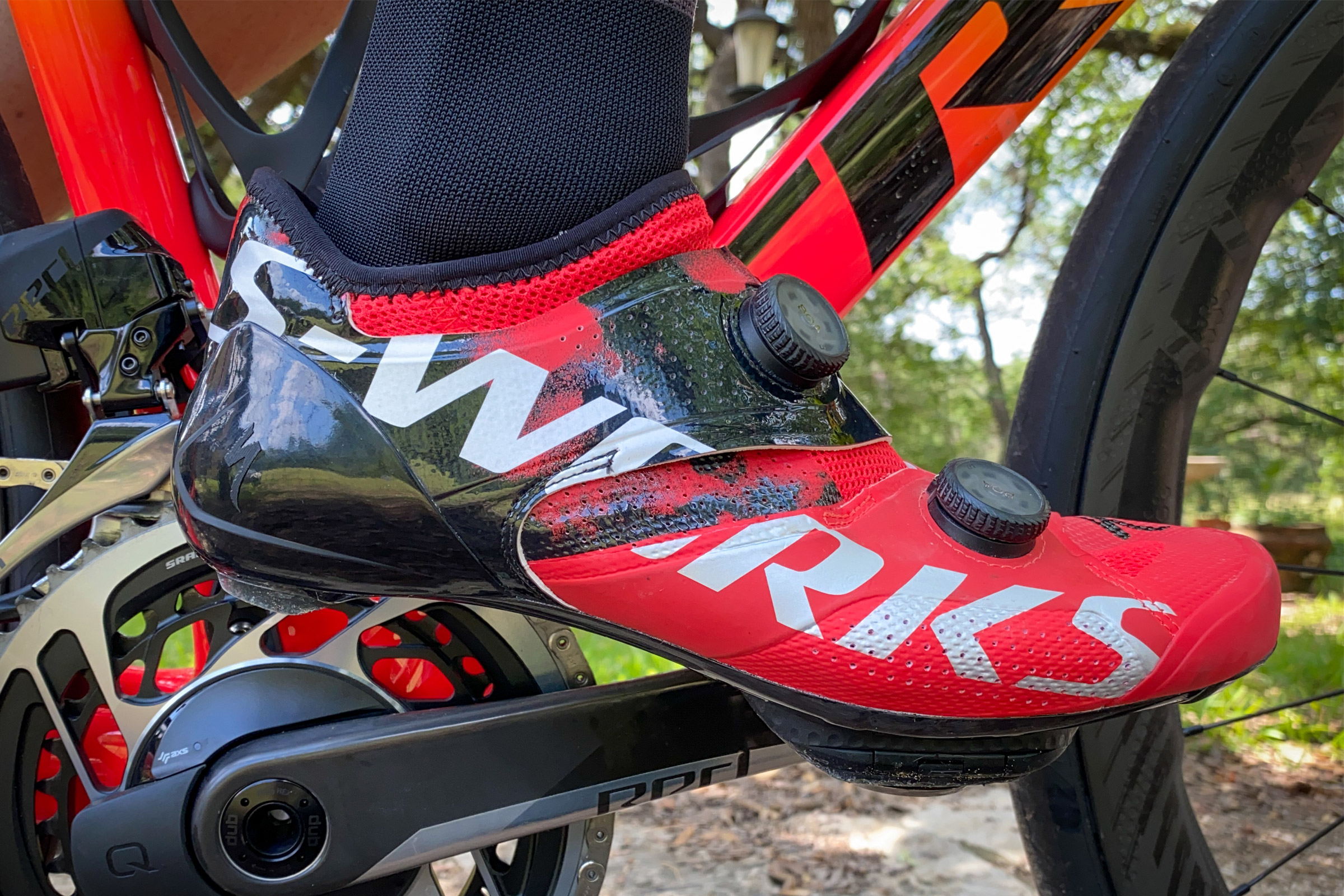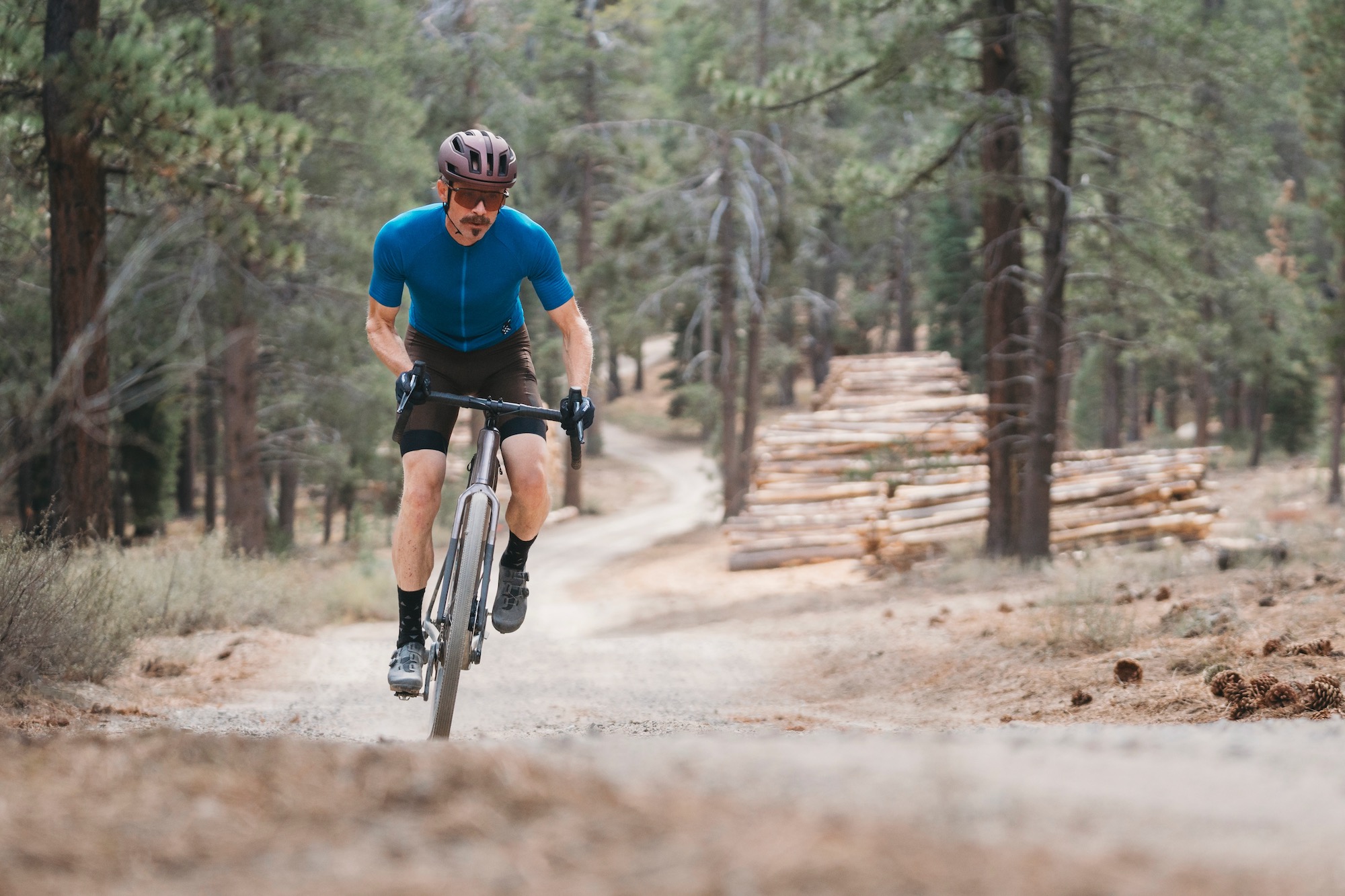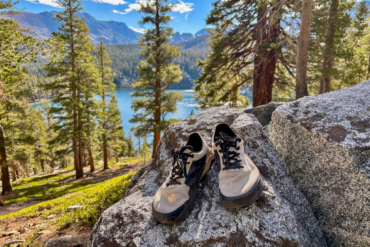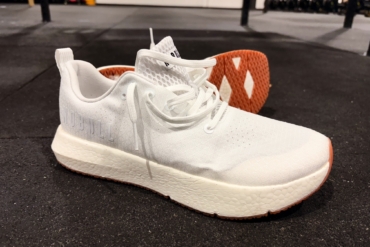Cycling giant Specialized released the S-Works Ares road shoes in late January amid much fanfare about it being 1% faster.
Several World Tour pros, including those in the recent Tour de France, bolstered Specialized’s “faster” claim by racing in the shoes at the highest levels. Since February, I’ve been testing a pair on all my road rides. They are indeed spectacular road shoes, but are they faster?
The S-Works Ares is everything you would expect from a pro-worthy road shoe: stiff, light, breathable, and stylish (for road bike fans). But a lot of high-end shoes are all this and more. If you’re looking to see how this shoe stacks up against the competition, check out GearJunkie’s guide to the best road bike shoes.
What sets the Specialized Ares apart are patented “Body Geometry” features and a unique upper closure system, both enhancing power transfer and comfort.

Specialized Shoe Body Geometry
The Big S adorned the Ares with its Body Geometry system, which adapts the parts or apparel to the body, not the other way around. For cycling shoes, this means a Varus Wedge, patented Longitudinal Arch, and Metatarsal Button.
A varus wedge tilts the outsole 1.5 mm to the outside, bringing the shoe up to the foot’s natural alignment, which translates up the leg to improve knee and hip alignment. This wedge not only aids power transfer but can also prevent injury.
An easy way to understand the varus wedge is if you sit with your feet dangling, the sole of your foot isn’t flat, and the varus wedge fills the gap to the flat outsole.

In conjunction, this alignment is only valid if the arch doesn’t collapse. Specialized addresses this with its longitudinal arch molded into the carbon outsole, customizable with three different arch height insoles.
The Metatarsal Button is a roughly quarter-sized dome in the insole that keeps the metatarsal bones spread apart, sparing the nerves and arteries from compression. Cycling shoes are tight for efficient power transfer, and this feature can protect delicate structures of the foot.

Power Delivery
Development of the Specialized S-Works Ares road shoe started in 2011 with Mark Cavendish and over a decade included other World Tour powerhouse sprinters: Marcel Kittel and Sam Bennet. These human rockets demanded the power and security for 40+mph sprints but the comfort for long stages typical in the World Tour.
First, Specialized moved the lower Boa closure further down the shoe to reduce pressure on the tendons on the top of the feet, a problem for Bennet in the past. The Specialized team then used pressure mapping to guide the development of the upper closure.
Instead of the Boa cables running straight across the upper, they diverge and span a wide area across the mid and upper foot. This unique upper closure architecture produces a large surface area to spread the tension; 20% more contact area according to Specialized.
This patented closure can deliver a tight and secure fit without generating high-pressure points. And this spawned the “1% faster” saying.

This upper is mated to a FACT Powerline carbon outsole and an extremely stiff heel counter. The outsole has a stiffness index of 15, and I cannot see how anyone would need or want any stiffer. And at 1 pound 1.6 ounces verified per pair in size 43, they are still extremely light.
Is It Really 1% Faster?
I’m no Cav but I do have sensitive feet, really sensitive. And across my almost 40 years of road cycling, I’ve had many shoes and lived through many seasons of pain in my feet.
The Body Geometry facets of this shoe were not a gimmick to me. In the middle of my cycling career, I was fortunate enough to get measured for custom orthotics that mimic the purpose of the Varus Wedge and Longitudinal Arch of the Ares shoe.
Back then, it was a game-changer for me, eliminating much of my foot pain and improving both my maximal and submaximal power outputs since my legs were better aligned.
The closure system worked as described. I could crank down the Boa dials until my foot felt welded to the outsole and all I perceived was absolute security. No hotspots, no tendon or nerve smashing, no metatarsal squeezing.
I felt my foot was immoveable in the shoe, transferring my feeble power to the stiff midsole, which in turn delivered that torque to the rear wheel.
The shoe also did a remarkable job of ventilating heat in the hot and humid Texas summer.

Conclusions on the S-Works Ares
Many high-end road shoes effectively transfer power, but the S-Works Ares does it comfortably and safely. The unique closure system spreads out the tension that keeps the foot glued to the stiff carbon outsole. And the Body Geometry bits keep things aligned under load to prevent injury and discomfort.
Are they 1% faster? To the elite of the elite that helped develop this shoe, maybe they are. To mere mortals that can shell out MSRP $425, the difference in comfort while sprinting for the city limit sign or attacking your riding buddy while they scarf a donut is what matters.
The Ares delivers, potentially making cycling more enjoyable by a margin in excess of 1%.
Check Price at BackcountryCheck Price at Jenson USA
Check Price at Competitive Cyclist








